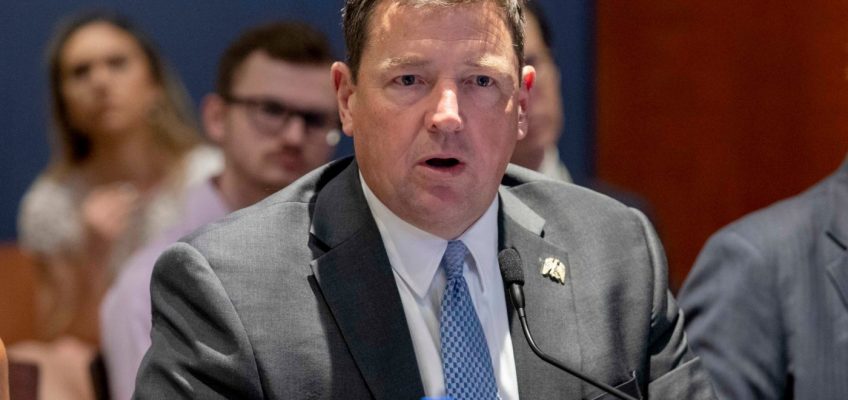By SARA CLINE and BARBARA ORTUTAY
BATON ROUGE, La. (AP) — Louisiana sued the online gaming platform Roblox on Thursday, alleging the wildly popular site has perpetuated an environment where sexual predators “thrive, unite, hunt and victimize kids.”
Related Articles
Rabbits with ‘horns’ in Colorado are being called ‘Frankenstein bunnies.’ Here’s why
A Michigan autoworker’s wallet is found under a hood in Minnesota — 151,000 miles later
Judge appoints receiver to sell off Alex Jones’s Infowars assets to help pay Sandy Hook families
Judge orders Lake Elmo mother to be released after immigration arrest
As federal activity takes root in DC, police chief orders more cooperation with immigration agents
The lawsuit, filed in state court by Louisiana Attorney General Liz Murrill, alleges that Roblox has failed to implement effective safety measures to protect child users from adult predators.
“Due to Roblox’s lack of safety protocols, it endangers the safety of the children of Louisiana,” Murrill said in a news release. “Roblox is overrun with harmful content and child predators because it prioritizes user growth, revenue, and profits over child safety.”
The company has faced lawsuits and backlash for not doing enough to protect kids on its gaming services. Last month, a lawsuit was filed in Iowa after a 13-year-old girl was allegedly introduced to an adult predator on the platform, then kidnapped and trafficked across multiple states and raped.
In Louisiana, Livingston Parish Sheriff Jason Ard said his office has had multiple cases involving Roblox. In one, police allege a man used voice-altering technology to pose as a girl on the platform. Ard said there have yet to be any arrests made related to the gaming site.
Ultimately, Murrill said she believes Roblox should be shut down.
An email seeking comment was sent to the company Thursday.
The free online gaming platform has more than 111 million monthly users. Its website describes Roblox as “the ultimate virtual universe that lets you create, share experiences with friends, and be anything you can imagine.”
Roblox doesn’t allow users to share videos or images in chats and tries to block any personal information, such as phone numbers. However, as with other gaming platforms and social media sites with similar policies, people find ways around such safeguards.
Roblox, which according to its website has “a zero-tolerance policy for the exploitation of minors,” doesn’t allow children under 13 to chat with other users outside of games unless they have explicit parental permission. Because the platform does not encrypt private chat conversations, the company can monitor and moderate them.
However, Murrill said there is no age minimum or substantial age verification process once a user signs up. As a result, young children, teens and adults posing as children can sign up, she said.
The company says on its website that age verification “is a new feature that is currently in testing on Roblox.” Last month, it launched a feature that requires teenagers aged 13 to 17 to send a video selfie to verify their ages if they want to chat freely with people they know, called “trusted connections.”
Amid mounting criticism in recent months, the company has implemented additional measures that it says will keep their young users safe.
In August, Roblox told AP that it was rolling out an artificial intelligence system to help detect early signs of possible child endangerment, such as sexually exploitive language. Roblox said the system led it to submit 1,200 reports of potential attempts at child exploitation to the National Center for Missing and Exploited Children in the first half of 2025.




